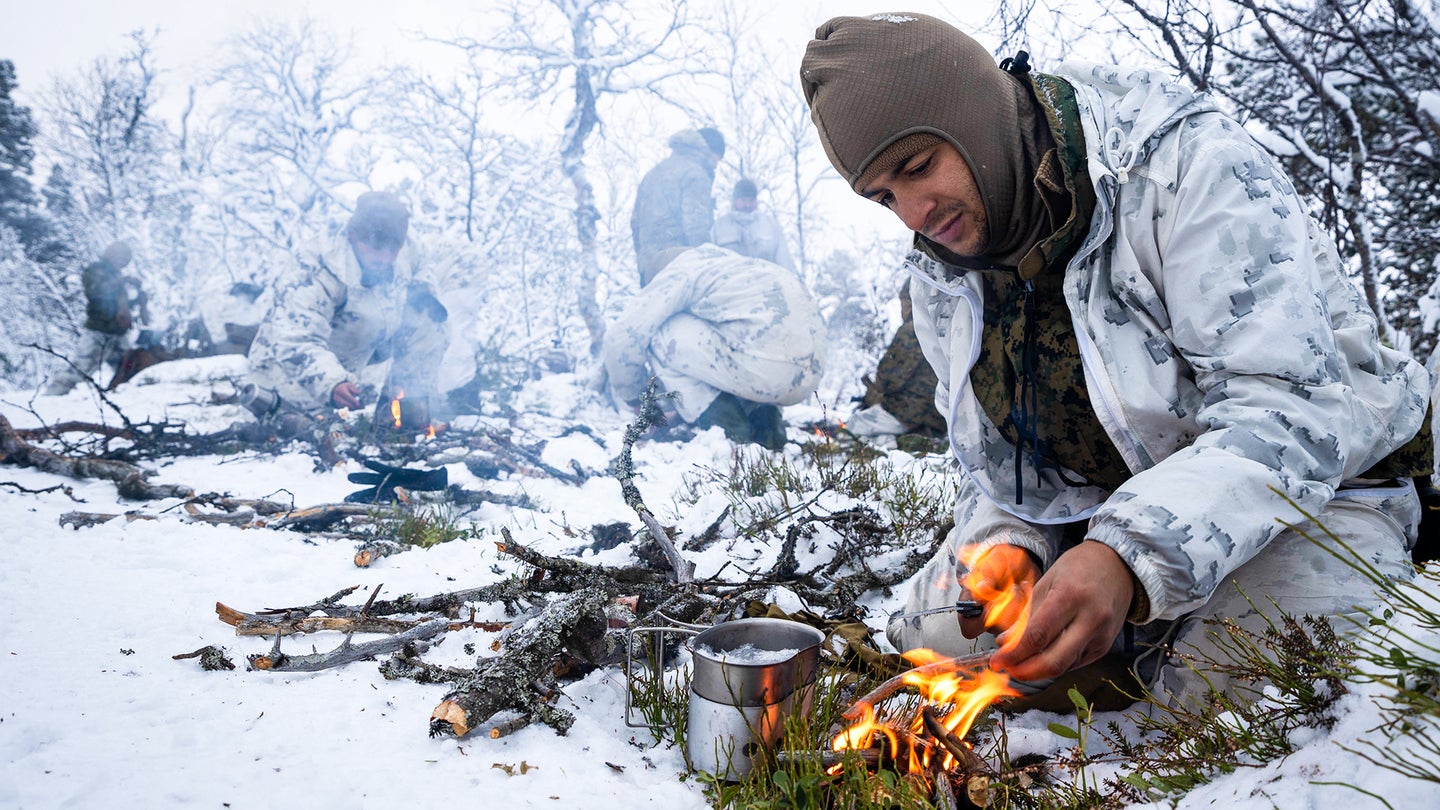How to survive and even thrive in cold weather
Common sense and a little bit of know-how can prevent cold weather injuries.

Squinting my eyes in the near white-out conditions was mildly annoying, and, sure, I was worried about the 30-mile-per-hour winds beating against the few inches of skin I’d arrogantly left exposed. But, still, I felt at home. For my out-of-state friends, however, the situation was a little more dire. It was December in the Dakotas, and none of them had ever experienced weather like that before. Miserable as they were, I couldn’t help but remind them this was “toboggan” weather — the sort of conditions local children break their sleds out for.
Growing up in South Dakota, I gained a healthy respect for what the winter season is capable of. We send our kids to school in this weather, we go to work in this weather, and, hell, we even go out to the lake in this weather just to drill a hole in the ice and sit around it all day. For fun. That’s just life on the high plains. It takes a special breed to live and thrive in subzero conditions for weeks at a time. It also takes some common sense and a little bit of know-how to prevent cold weather injuries.
Every year, cold weather injuries claim countless people who ventured into the unforgiving elements unprepared and untrained. Don’t be one of them. If, this winter, you’re going to lose your mind and head out to the Dakotas, or any other place where freezing to death (literally) is possible, first do yourself a favor and memorize the Army’s KOLD acronym: Keep it clean, avoid Overheating, wear clothing Loose and in Layers, and keep clothing Dry. That’s a good start, but here are a few more key tips to help you stay warm and, more importantly, alive.

Cover every inch of your skin, literally.
Exposure to these elements can be a sure way to find yourself in a bad situation. In addition to the obvious — covering your feet, legs, arms, and core like you would in normal winter conditions — you will also need to have something for your hands, face, and head. The skin on your face will be brutalized in the piercing wind, and your hands will go numb within a minute or two if unsheathed. I personally like my Marmot Randonnee gloves as they have a moisture-wicking liner and cinch close at their opening to keep driving winds out. Every bit of bare skin is a crack in your armor, don’t give the enemy an opening to attack you! Pack accordingly.
Dress in layers that make sense.
Extreme temperature swings are possible in remote environments, so you’ll need the ability to quickly add to or take away from your wardrobe. A wicking material, such as synthetic polyester or merino wool, should always be used as the base layer against your skin. This will help keep your skin dry when performing vigorous activities and will be comfortable when you shed your other layers to crawl into a sleeping bag at night. After that, you will need 2-3 light to medium layers (almost any material is acceptable, but at least one layer should be insulated), and they should all be loose-fitting. Finally, your winter parka will be your exterior shell. I have worn the Beyond Clothing Level 7 Parka in some of the most extreme environments possible without suffering so much as a shiver – you absolutely cannot go wrong with the L7 as your outer layer. Follow a similar scheme for your legs (but not as many layers) for the best results.
Chapstick and sunglasses are a must.
It’s often the small things that make the difference between comfort and injury. I’m a Blistex kind of guy myself, but as long as you are using some sort of chap-stick, you should be in the clear. I’ve seen people forego this measure and have cracked, bleeding lips by the end of the afternoon. As far as sunglasses go, almost anything will do. They serve two purposes. One, they act as a barrier between your eyes and the driving wind. And two, they prevent straining your eyes against the bright white environment. In some environments, you’ll need specialized glasses for prolonged outdoor activity, so do your research and plan accordingly.

Don’t get wet.
Seriously, don’t do that. Getting wet is one of the fastest ways to find yourself with a severe cold weather injury that is potentially life-threatening. If you are going to do an activity like ice fishing, make sure you keep a towel and an extra set of dry clothes nearby just in case. If you are doing something active that will cause you to sweat, make sure you heed the above advice about that wicking base layer. Being wet in sub-zero temps is no joke, so make sure you take this one seriously.
Remember: shivering isn’t a good thing.
If you are shivering, it means your body is trying to generate heat via rapidly moving muscles. It’s a defensive mechanism that helps regulate body temperature, just like sweating. Unlike sweating, shivering is a sign you are doing something wrong. If you are dry and dressed appropriately, you should be completely warm and comfortable from head to toe — no shivers needed. Ultimately, this can be boiled down to listening to your body when it’s telling you something is wrong.
The latest on Task & Purpose
- What you need to know about Biden’s IRR executive order
- Vet whose service dog died after violent arrest sues police
- Did Ukraine just assassinate a Russian submarine captain with his own Strava?
- Space Force NCO faces murder charges in shooting of two teens breaking into his Hyundai
- How the Air Force ran short of money for personnel
